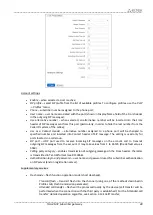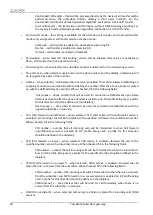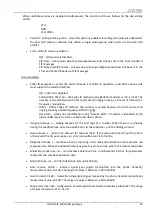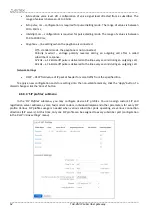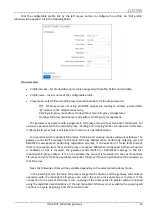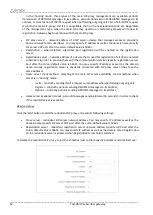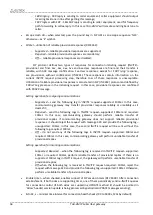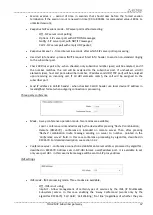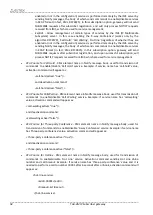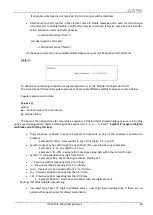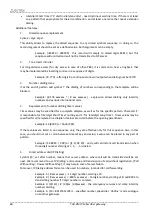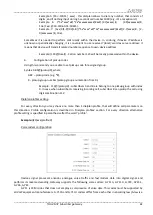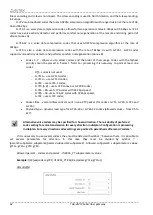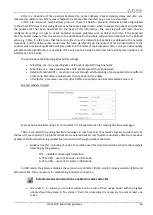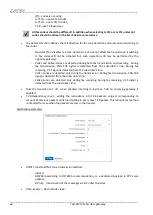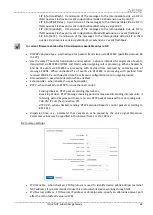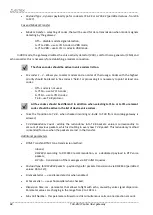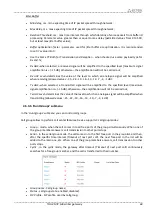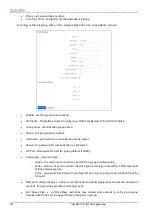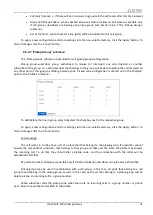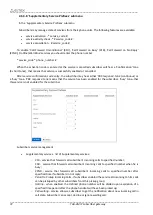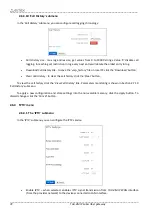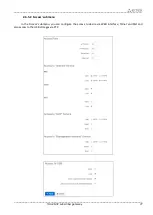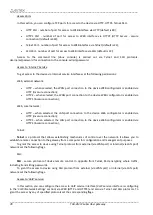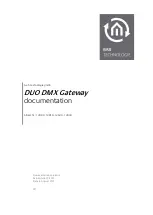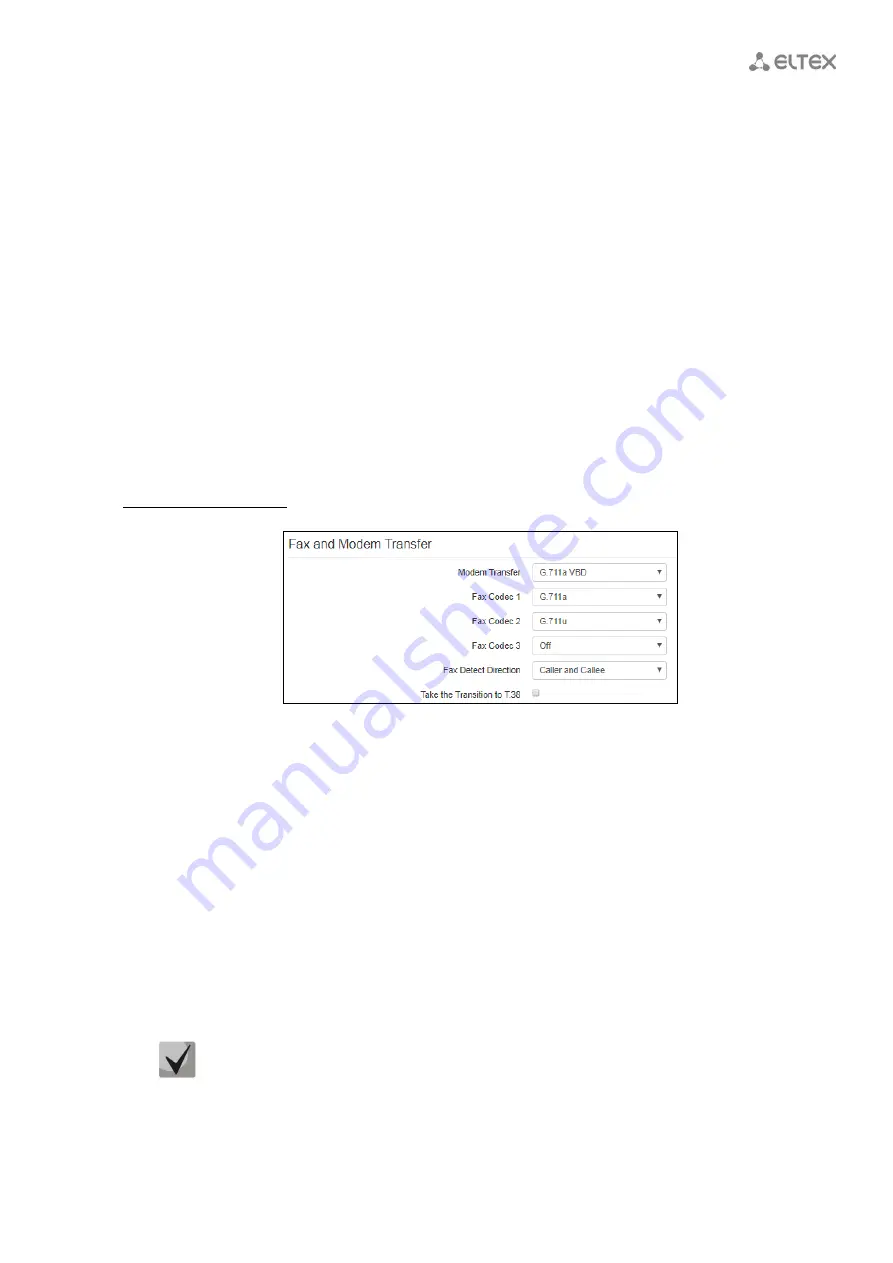
____________________________________________________________________________________
____________________________________________________________________________________
TAU-4M.IP Subscriber gateway
63
Jitter is a deviation of time periods dedicated to packet delivery. Packet delivery delay and jitter are
measured in milliseconds. Jitter value is higher for real time data transfers (e.g. voice or video data).
In RTP, also known as 'media stream protocol', there is a field for precision transmission time tag related
to the whole RTP stream. Receiving device uses these time tags to learn when to expect the packet and whether
the packet order has been observed. On the basis of this information, the receiving side will learn how to
configure its settings in order to evade potential network problems such as delays and jitter. If the expected
time for packet delivery from the source to the destination for the whole call period corresponds to the defined
value, e.g. 50ms, it is fair to say that there is no jitter in such a network. But packets are delayed in the network
frequently, and the delivery time period may fluctuate significantly (in the context of time-critical traffic). If the
audio or video recipient application will play packets in the order of their reception time, voice (or video) quality
will deteriorate significantly. For example, if the voice data is being transferred, there will be interruptions and
interference in the voice.
The device have the following jitter buffer settings:
Min delay, ms
- min expecting time of IP packet spread through network;
Max delay, ms
- max expecting time of IP packet spread through network;
Deletion threshold (DT)
- max time interval through which deleting of voice packets from buffer id
processing. Parameter value greater than or equal to max delay;
Jitter factor
- parameter, used for jitter buffer size optimization. Recommended value is 0.
Fax and modem transfer
Fax may be transmitted using 711 voice codec or T.38 special codec for sending facsimile messages.
T.38 is a standard for sending facsimile messages in real time over IP networks. Signals and data sent by
the fax unit are copied to T.38 protocol packets. Generated packets may feature redundancy data from previous
packets that allows performing reliable fax transmissions through unstable channels.
Modem transfer
- selecting of codec, that will be used for data transmission when modem signals
detecting by the gateway:
–
Off — disable modem signal detection;
–
G.711a VBD – use G.711A codec in VBD mode;
–
G.711u VBD – use G.711U codec in VBD mode.
In VBD mode, the gateway disables the voice activity detector (VAD), comfort noise generator (CNG) and
echo canceller; this is necessary for establishing a modem connection.
Selected codec should also be enabled in voice codec list.
Fax codec 1...3
- allows you to select codecs and an order of their usage. Codec with the highest
priority should be placed in 'Fax codec 1' field. For processing it is necessary to point at least one
codec:

